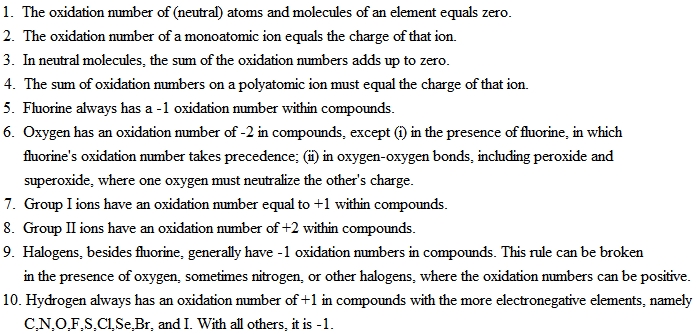In #"PbS"(s) + 4"H"_2"O"_2(aq) -> "PbSO"_4(s) + 4"H"_2"O"(l)#, what was oxidized and what was reduced?
2 Answers
Oxidation - involves the loss of electrons or hydrogen OR gain of oxygen OR increase in oxidation state.
Reduction - involves the gain of electrons or hydrogen OR loss of oxygen OR decrease in oxidation state.
We can look at the reactants and figure out which one of the reactant has oxidized and which one has got reduced.
PbS + 4
our reactant is PbS, it takes up oxygen from
In terms of electrons
Pb goes from+2 oxidation state (OS) to +2 oxidation state.
S goes from -2 OS to +6 (OS) so S has lost e-, S is oxidized
O changes -2to form -1 , so O has gained e-,O is reduced
H2O2 loses one atom of oxygen to form H2O. Therefore, it is said that it is being reduced as it has lose an atom of oxygen.
Therefore, PbS is being oxidized by receiving oxygen to form PbSo4.
You wrote:
Well, we can look at the oxidation states. So, we have the following compounds to look at:
We can consult this oxidation-state assignment hierarchy:

SULFUR IN LEAD SULFIDE AND LEAD SULFATE
Anionic sulfur has a
...its oxidation state is
#\mathbf(2^(-))# according to rule 2 for the reactants side.
Furthermore, sulfate (
...the oxidation state of the sulfur on the products side is
#\mathbf(6^(+))# .
LEAD IN LEAD SULFIDE AND LEAD SULFATE
As a result of the above reasoning and according to rule 3, cationic lead must then be
HYDROGEN AND OXYGEN IN HYDROGEN PEROXIDE
Since rule 6 has an exception for hydrogen peroxide, we must go down to rule 10 and realize that hydrogen's oxidation state in
...the oxidation state of oxygen becomes
#\mathbf(1^(-))# to correspond to a neutral molecule according to rule 3.
HYDROGEN AND OXYGEN IN WATER
In water, however...
...oxygen's oxidation state is
#\mathbf(2^(-))# since it is an ordinary compound and not an exception.
As a result, hydrogen's new oxidation state in water is also
SO, WHAT CHANGED OXIDATION STATE?
Sulfur went from
#\mathbf(2^-)# to#\mathbf(6^(+))# and oxygen went from#\mathbf(1^-)# to#\mathbf(2^-)# . Sulfur became more positive, and oxygen became more negative.
Remember any mnemonic devices? My teacher taught, "LEO-the-lion-goes-GER":
Loss of Electrons = Oxidized
Gain in Electrons = Reduced
Thus, oxygen was reduced (became more negative) and sulfur was oxidized (became more positive).
Another way you could think about this is the organic chemistry "version" of redox. It's pretty intuitive, actually:
Gain in oxygen or loss of hydrogen = oxidized
Gain in hydrogen or loss of oxygen = reduced
Sulfur lost one lead and acquired four oxygens, so it got oxidized.
Each oxygen had one hydrogen and gained one more, so it got reduced. Or, oxygen was the oxidizing agent for sulfur, so it therefore got itself reduced.


